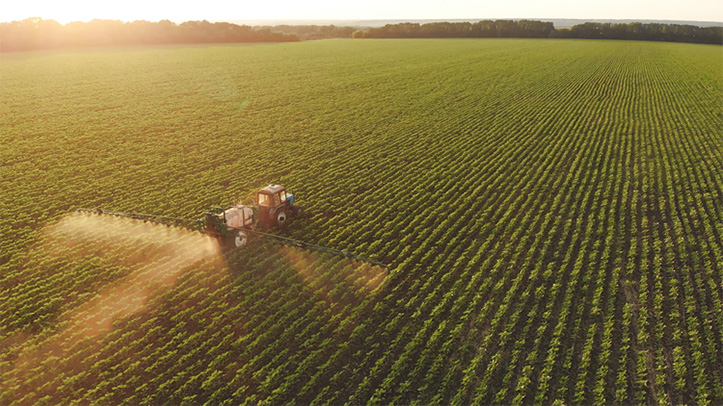Work is ongoing to evaluate soya alternatives for practical use in diets
By Lottie Farrow, commercial nutritionist, Premier Nutrition
Criticism of the use of soya bean meal (SBM) in poultry diets remains high from retailers, due to negative public perception, sustainability implications and deforestation associations.
Protein is a key nutrient within UK poultry diets; amino acids are the essential protein building blocks for growth and support of bodily functions which are primarily sought from SBM. SBM is protein rich with typically 46% crude protein (CP), highly digestible amino acids and relatively low anti-nutritional factors (ANF) in comparison to other protein sources.
Poultry have a unique profile of amino acid requirements, which very closely follow the same profile as SBM when combined with single methionine. Whilst it is theoretically possible to replicate these requirements with alternatives, there are still many hurdles that need to be overcome and important factors that need to be considered when selecting these raw materials. To reduce reliance on SBM, raw material selection should be done with careful considerations of some of these factors.
An important aspect of formulating poultry diets is maximising nutrient bioavailability and precisely formulating to the birds’ requirements, which vary depending on life stage. Formulating to digestible amino acid levels is key in maintaining the precise amino acid balance and not delivering excess crude protein. Excess crude protein can lead to higher nitrogen excretion and cause gut health challenges. Undigested protein can cause proliferation of harmful bacteria in the gut, which can challenge bird health and performance.
Once the amino acid profile is understood, the use of alternative protein sources can be balanced by single amino acids. Out of the 20 L-amino acids that can be synthesised from protein, poultry are unable to synthesis nine. These are called essential amino acids. Not all these essential amino acids are commercially available in the single form and the required balance will need to come from the raw materials in the diet.
Once an ingredient has been evaluated to be beneficial and meet the nutritional specifications to fit into a diet, other factors need to be considered; commercial availability, processing requirements and the cost of production.
Commercial availability of alternative protein sources mean they have difficulty competing with soya, given the good supply and processing facilities of soya into the UK. Without further processing, the presence of ANFs in many commodities will limit the inclusion in diets. For instance, the ANFs in soya can be reduced via heat treatment during the oil extraction process. It is not only crop availability but also infrastructure requirement to enable access to sufficient tonnage in the market.
In addition to processing, additives such as enzymes can also be used to minimise the impact of ANFs and further utilise nutritional value. Typically, in soya free diets we rely on multiple protein sources, which can all have different associated ANFs. The combination of ANFs and their impact when formulating soya free diets needs to be further understood to optimise performance.
In the last couple of years, we as nutritionists have had a growing number of requests to evaluate and implement rations with low global warming potential, whilst maintaining bird performance. This can be done through reducing soya and diets can be compared using GFLI lifecycle assessment (LCA) figures. The GFLI database is a global reference database that uses and differentiates the LCA results for macro feed ingredients. Factors such as geographic location, processing and transport are used in the calculation process.
Comparing diets of comparable nutritional value, reducing soya can reduce C02e (kg/tonne) when land use change (LUC) is included however when excluding LUC this is not necessarily the case. Undoubtably the correct selection of raw materials and careful balance of protein supply can lead to a reduction in feed carbon footprint.
The below table highlights alternative protein potentials and benefits and limitations of their selection within poultry diets.
Table of Raw Material Benefits and Limitations
| RM | Benefits | Limitations |
| Rapeseed Meal | Readily available
Reduce ANF with processing |
UK increasingly difficult to grow due to pest pressure
Processing requirement ANF – Tannins |
| Beans | UK growing capacity good
Easy to build into arable rotation |
ANF – Tannins, vicine/convicine
Limited all year-round national availability |
| Sunflower meal | High insoluble fibre fraction beneficial to layers and breeders
High level of methionine |
Historic dirty eggs perception |
| DDGS | Use of by product substrate | Higher mycotoxin risk
Relatively poor digestibility |
| Insect Meal | Good amino acid profile
Highly digestible Upcycling of waste streams in the insect process |
Legislation prevents UK use at present
Availability poor Variable consistency Processing requirement |
| Prairie Meal | Highly digestible | Amino acid profile
Processing requirement |
| Processed Animal Proteins (PAP) | Highly digestible | Legislation prevents UK use at present
Availability poor Public perception |
| Peas | UK production
Highly digestible |
ANF- Trypsin inhibitor and Lectins
Limited national all year-round availability |
| Lupins | High CP in comparison to other alternatives | ANF – Alkaloids
Lack of UK grown availability |
With good nutritional understanding and availability of alternative raw materials it is possible to reduce soya in poultry diets. However, it should be done slowly and in managed stages. This gives both the bird and businesses chance to adapt to the changes. Adaption to reducing soya and no soya will, at present, come at a cost.


